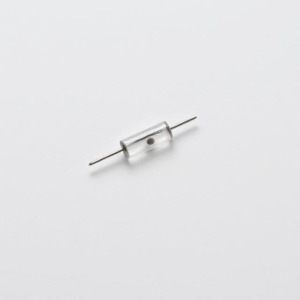A diode is a small electronic component that allows electric current to flow in one direction only, while blocking it in the opposite direction. Think of it like a one-way valve for electricity. Diodes are used in various electronic devices to control the direction of current, making them essential in circuits like power supplies, signal processing, and more.

Simple Explanation:
- Direction Control: A diode acts as a gate that only opens in one direction. It lets current pass through when the voltage is in the right direction and blocks it when the voltage is reversed.
- Symbol: The symbol of a diode looks like a triangle with a line at the point. The triangle represents the direction of current flow (from left to right), and the line represents the “blocking” part of the diode.
Basic Components of a Diode:
A diode is made from two different types of semiconductor material:
- P-type material: Has more “holes” (places where electrons can go).
- N-type material: Has more electrons than the P-type material. When these two materials are joined together, a P-N junction is formed. The diode works because of the properties of this junction.
How a Diode Works:
- Forward Bias (Allowing Current):
- When the positive side of the power supply is connected to the P-side and the negative side to the N-side (this is called “forward bias”), the diode allows current to flow. In this case, the P-N junction “opens,” and electrons can move from the N-side to the P-side, allowing the current to pass.
- Reverse Bias (Blocking Current):
- When the power supply is reversed (positive to the N-side and negative to the P-side), the diode blocks the current. In this condition, the P-N junction “closes” and prevents current from flowing. This happens because the P-type and N-type materials repel each other, creating a barrier that the electrons can’t cross.
Why Are Diodes Useful?
- Rectification: Diodes are used in power supplies to convert AC (alternating current) to DC (direct current). The AC current constantly changes direction, but the diode makes it so that current only flows in one direction, effectively “rectifying” it.
- Protection: Diodes can be used to protect circuits from unwanted voltage spikes. For example, a Zener diode can be used to clamp voltage to a safe level.
- Signal Modulation: In communication systems, diodes can modify electrical signals for various purposes, such as demodulating radio signals.
Types of Diodes:
- Standard Diode: Used for simple applications where current needs to flow in one direction only.
- Zener Diode: Allows current to flow in both directions, but with a specific voltage limit to prevent over-voltage.
- Light Emitting Diode (LED): A diode that emits light when current flows through it.
- Schottky Diode: A type of diode with a lower voltage drop, used for high-speed switching applications.
Summary:
A diode is like a “traffic light” for electrical current, letting it flow one way and stopping it in the opposite direction. It is built from two types of semiconductor material (P-type and N-type), and it is used in various applications, from converting AC to DC to protecting circuits and emitting light in LEDs.
Tags: AC to DC, blocking, clamp voltage, Communication Systems, converting, current block, current flow, current pass, demodulating, Diode, direction control, electric current, electrical current, electronic component, electrons, emitting light., forward bias, high-speed switching, LED, light-emitting diode, line, N-type material, negative side, one direction, one-way valve, P-N junction, P-type material, positive side, Power Supply, protecting circuits, protection, radio signals, rectification, reverse bias, Schottky diode, semiconductor, semiconductor material, signal modulation, standard diode, symbol, traffic light, triangle, voltage drop, voltage spikes, Zener diode


